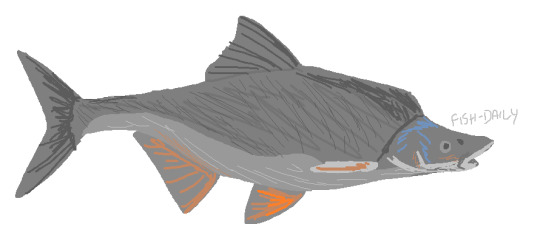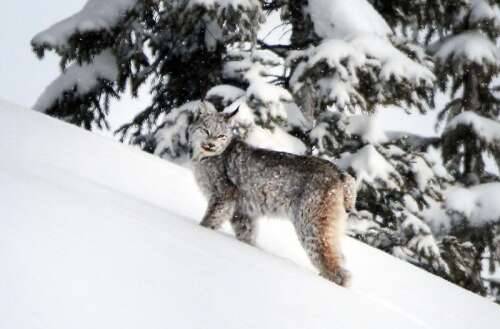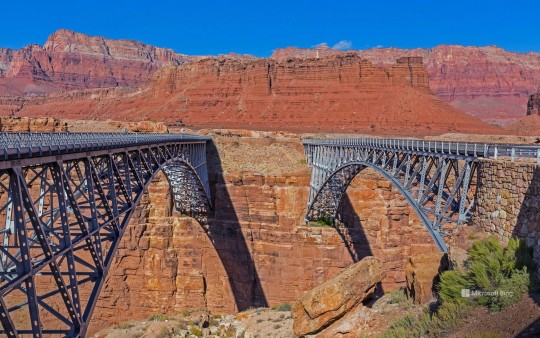#humpback chub
Note
I would love to see you draw a Humpback Chub! I hope you're having a nice day!!

fish 297 - humpback chub
89 notes
·
View notes
Text

The Endangered Humpback Chub from real life is a Killjoy!!
Requested by: @felix-the-creature
21 notes
·
View notes
Text




I have a weird hidden talent on drawing fish
#digital fanart#fish#sockeye salmon#Humpback Chub#Blue Fin Tuna#reverse mermaid#drawing#random#secret talents
3 notes
·
View notes
Link
0 notes
Text
is there any fish more beautiful & charming than the humpback chub
7 notes
·
View notes
Note
omg finally someone who doesn’t judge me for having whales as my favorite animals!! (along with bats, they’re also so cute) everyone’s like “why would you pick a whale for your favorite animal?” um hello have you seen how pretty they are!? my favorites have to be beluga whales and narwhals though! the little girl in me still wants to believe unicorns are real and narwhals are the closest thing to it. also beluga whales are just adorable little chubs like omg i’m sorry for the rant i just love talking about animals so much
—🐋

Wahhgggg I seriously love whales so much. Personally I like belugas and narwhals sm too. Especially after watching Extraordinary Attorney Woo and learning that narwals sometimes exist in the same pod as Belugas. That show made me feel better about loving whales too (and having autism) 🤧 and I know whale sharks are not whales but I’ll include those as well because they look like mini whales and are in my top ten. Some other whales I love are humpback, Indo pacific bottlenose dolphin and orcas. Check out my about page hehe I’m a big animal lover 🤭 so sorry about that everyone! I could honestly talk about animals all day if you let me 😭😅 ~ 🐶🐰🍓

2 notes
·
View notes
Text

North America Freshwater Fish Group - This is a representation of the fish species that are native to North America.
Row 1 Redear Sunfish, Warmouth Sunfish, Green Sunfish, Longear Sunfish, Bluegill Sunfish, Rock Bass, Northern Sunfish
Row 2: Pumpkinseed Sunfish, Orange Spotted Sunfish, Redbreast Sunfish, Black Crappie, White Crappie, Shadow Bass
Row 3 : Black Sotted Sunfish, Redspotted Sunfish, Black Banded Sunfish, Dollar Sunfish, Ozark Bass, Bantam Sunfish, Sacramento Perch
Row 4: Flier Sunfish, Roanoke Bass, Blue Spotted Sunfish, Banded Sunfish, Shoal Bass, Guadaloupe Bass
Row 5: Smallmouth Bass, Suwannee Bass, Largemouth Bass, Redeye Bass, Spotted Bass
Row 6: Striped Bass, White Bass, White Perch, Yellow Bass, Walleye, Yellow Perch
Row 7: Pickeral, Northern Pike, Muskie, Rainbow Smelt
Row 8: Blue Catfish, Channel Catfish, Flathead Catfish, White Catfish
Row 9: Black Bullhead, Brown Bullhead, Yellow Bullhead, Freshwater Drum, Humpback Chub, Northern Pikeminnow
Row 10: Bull Shark, American Paddlefish, Alligator Gar
Row 11: Goldeye, Bowfin, Texas Cichlid, American Shad, River Carpsucker, Burbot
0 notes
Text
Wildlife numbers on the decline in Southwest Colorado, plummeting worldwide – The Durango Herald
Wildlife numbers on the decline in Southwest Colorado, plummeting worldwide – The Durango Herald
Species threatened locally include Gunnison sage-grouse, Townsend’s big-eared bat and Humpback chub
One of three lynx seen in March 2015 just north of Molas Pass. (Jerry McBride/Durango Herald file)
Wildlife populations worldwide have plunged an average of 69% since 1970. That was the staggering conclusion of the Living Planet Report 2022 released by the World Wildlife Fund earlier this month.…

View On WordPress
0 notes
Text
Marble Canyon, Arizona, USA

You may think that this plunging canyon is the Grand Canyon, but today we’re exploring a lesser-known canyon about 115 kilometres away. Named for its resemblance to marble, the natural sandstone and limestone topography of Marble Canyon contains ethereal hues of pink, grey, purple, white and even gold. Located on the Colorado River, Marble Canyon may not be as well known as the Grand Canyon, but it is still a popular destination among adventure seekers and nature lovers.
Bordered on the east by the Navajo Indian Reservation and on the west by Kaibab Plateau, Marble Canyon tells a story of desert-life culture. Among the remnants found here include split-twig animal figurines that date back 4,000 years. It’s also home to an incredible variety of flora and fauna, such as the Townsend’s big eared-bat, the now-endangered Kanab ambersnail and humpback chubs.
In 1995, the twin bridges in today’s image, known collectively as Navajo Bridge, were officially dedicated as the second bridge was installed. The first bridge had long been essential for travel across the 250-metre gap of Marble Canyon. But as the area experienced more traffic, and after much debate about the impact on Native land and endangered plants, plans were developed for the nearly identical second bridge. Now, Marble Canyon has two bridges, each about 150 metres over the Colorado River. The original serves as a path for humans and horses while the new bridge carries vehicles. Both bridges hold the title of ninth-highest in the United States (though the newer one is about a metre higher).
1 note
·
View note
Text
7.6.22 Headlines
WORLD NEWS
South Africa: President decries deaths of 21 teens in tavern (AP)
“The deaths of 21 teenagers in a nightclub tragedy is a crime and South African officials must increase steps to prevent alcohol from being illegally sold to youths, South African President Cyril Ramaphosa said Wednesday.”
India: Heavy rains bring Mumbai to a standstill (BBC)
“It's that time of the year again when heavy rains in the Indian city of Mumbai and nearby areas have disrupted the lives of millions of people in the country's financial capital. Many parts of the city remain inundated in waist-deep water as incessant rains lash the city, causing flooding.”
Ukraine: G-20 meeting may lead to wider divisions over war (AP)
“Foreign ministers from the world’s largest nations are looking to address Russia’s war in Ukraine and its impact on global energy and food security when they meet in Indonesia this week. Yet instead of providing unity, the talks may well exacerbate existing divides over the Ukraine conflict.”
US NEWS
July 4 Shooting: Suspect expected to appear in court (AP)
“The man charged with killing seven people when he unleashed a hail of bullets on an Independence Day parade from a rooftop was expected in court Wednesday as authorities faced questions about how he was allowed to buy several guns, despite threatening violence. Robert E. Crimo III was charged with seven counts of murder Tuesday in the shooting that sent hundreds of marchers, parents and children fleeing in fear and set off an hourslong manhunt in and around Highland Park, an affluent Chicago suburb on the shores of Lake Michigan. Investigators have yet to identify a motive.”
Abortion: Judge won’t block law banning most Mississippi abortions (AP)
“As attorneys argued about abortion laws across the South on Tuesday, a Mississippi judge rejected a request by the state’s only abortion clinic to temporarily block a law that would ban most abortions. Without other developments in the Mississippi lawsuit, the clinic will close at the end of business Wednesday and the state law will take effect Thursday.”
Environment: Biologists’ fears confirmed on the lower Colorado River (AP)
“Minutes later, the park service confirmed their worst fear: smallmouth bass had in fact been found and were likely reproducing in the Colorado River below Glen Canyon Dam. They may be a beloved sport fish, but smallmouth bass feast on humpback chub, an ancient, threatened fish that’s native to the river, and that biologists like Arnold have been working hard to recover. The predators wreaked havoc in the upper river, but were held at bay in Lake Powell where Glen Canyon Dam has served as a barrier for years — until now.”
#current events#news#south africa#india#floods#global warming#climate change#climate crisis#ukraine#war#russia#united states#mass shooting#gun violence#abrotion#environment
0 notes
Text



how I looked at animals when I went to the aquarium vs how they looked at me
#hi#me#my face#selfie#HUMPBACK CHUB#that’s my favorite fish btw#just because of the name#so#happy friday#cute girls#girls who lift#girls with tattoos#one last day to get through and then it’s the weekend BABEY#anyway#i love yall#be my friend#talk to me#i can’t sleep#someone talk me out of buying a birds aren’t real shirt#those things are FUNNY#also this is very random but champagne kisses is stuck in my head#and I’m gonna have a customer bring his aussie shepherd and husky mix into the store next week bc I’m in LOVE with benji#it be like that#ok#that’s enough rambling#penguin socks#wombats#love me#bye
70 notes
·
View notes
Photo


Humpbacked Chub - February 2022
This Humpbacked Chub was swimming rapidly through its tank. I tried several times to get a good image, but the light was not bright enough for a fast shutter speed. So I captured him with video and did a frame capture for this image. As you can see by the blurred background, I was tracking him with the camera and got a good frame of him, but the rocks were blurred. In many other frames of that video, both he and the rocks are blurred.
The second image is of a couple different Humpbacked Chubs feeding near some plants. They are partially motionless in the water and relatively easy to photograph, but I don’t think image two is as interesting as image one.
MWM
0 notes
Link
If water is the lifeblood of planet Earth, the American southwest is in big trouble.
John Wesley Powell, the one-armed US army civil war veteran who led the first white expedition down the Colorado River through the Grand Canyon – a daring boat run in 1869 – later became an ethnographer who wrote a prescient 1878 government paper titled: Report on the Lands of the Arid Regions of the United States. In it, he unflinchingly described the scarcity of water, and summarized that much of the American southwest, if it must be settled, should be settled lightly and modestly. Overpopulate it, and it will be unforgiving.
Wallace Stegner, the dean of western writers, observed, “As a government scientist, Major Powell was now defying ignorance. He was taking on vested interests and the vested prejudices by which they maintained themselves.”
In short, Powell was a sage.
Nobody listened to him.
Decades later, the US Bureau of Reclamation oversaw the construction of two massive arch-gravity concrete dams on the river: Hoover Dam in the 1930s that impounded Lake Mead; and Glen Canyon Dam in the 1960s, that impounded Lake Powell. Some people called them “engineering marvels”. Others said the dams defiled the Michelangelo of American rivers.
They changed everything. Phoenix and Las Vegas grew as if water came from the Big Rock Candy Mountain, where the bluebird sings to the lemonade springs and every day is pay day. Just flip the switch; turn on the tap. Or maybe they grew like invasive weeds, sprouting swimming pools, golf courses and lawns – a greedy developer’s dream. Farmers greened the desert. Cattle grazed the valleys. High voltage lines lit up casinos, stadiums and homes, keeping them warm in winter, cool in summer. It felt almost providential, ordained by God.
Today, the Colorado River provides water for 40 million people in seven states, but stricken by a devastating drought, it’s not what it used to be. Lake Mead and Lake Powell are both at about 30% capacity, down more than 140 feet from “full pool”. If the lakes go much lower, the dams will be unable to generate power. The snow pack in the Rocky Mountains – that feeds the 25 tributaries of the once mighty Colorado – is low yet again. And climate models say the entire region is going to get hotter and drier. More arid, less livable. The lakes reside in picturesque red rock country, but now sit surrounded by what looks like bleached bathtub rings as they evaporate in triple-digit summertime temperatures.
Welcome to the worst drought in an estimated 1,200 years.
“It isn’t sneaking up on us,” says John Entsminger, the general manager of the Las Vegas Water District and Southern Nevada Water Authority. “Since 2002, our population has increased close to 50%, about 750,000 people in the last 19 years or so, and over that same time our aggregated depletions from the Colorado River have gone down 235.” He asks, “Is this a drought, or is it just the way the hydrology of the Colorado River is going to be?”
Probably both.
After 11,700 years of relative stability, what geologists call the Holocene epoch, Earth has entered – or rather, human beings have created – a new epoch, the Anthropocene, brought about by our burning of fossil fuels and loading the atmosphere with the greenhouse gases carbon dioxide and methane.
Utah’s Governor Spencer Cox has asked his constituents to pray for rain, as if that’s leadership. Neither is in the forecast.
Civilizations blunder into self-destruction because they ignore the signals all around them, and refuse to change
When the Bureau of Reclamation planned and designed the dams, they were warned that their data sets were too small; that the desert has moods, that rivers fluctuate, water comes and goes, and the bones of previous civilizations are everywhere.
Some 700 years ago the Anasazi people disappeared from the Colorado Plateau. In his book, Collapse, the geographer Jared Diamond says multiple factors were involved, “but they all go back to the fundamental problem that the US Southwest is a fragile and marginal environment for agriculture – as is also much of the world today”. Civilizations blunder into self-destruction because they ignore the signals all around them, and refuse to change. The subtitle of Diamond’s book says it all: “How Societies Choose to Fail or Succeed.”
How then to succeed? The Kentucky poet-essayist-novelist Wendell Berry, who is also a farmer, says, “We have lived our lives by the assumption that what was good for us would be good for the world. We have been wrong. We must change our lives so that it will be possible to live by the contrary assumption, that what is good for the world will be good for us. And that requires that we make the effort to know the world and learn what is good for it.”
If the biodiversity is dying, if the humpback chub, southwestern willow flycatcher and desert tortoise are threatened or endangered, and if nothing changes, then they, like the Anasazi, will disappear. And modern cities will be next. Imagine Phoenix at 130F. It’s coming.
To survive will take a tremendous amount of cooperation, innovation and sacrifice. A true test of American character. In her book, A Paradise Built in Hell, the author-essayist and Guardian US columnist Rebecca Solnit documents how people often pull together during crises, from the London Blitz to Hurricane Katrina, and show a great sense of community, purposefulness and even joy. She concludes that in a world of everyday pain, “This is the only paradise that is possible, and it will never exist whole, stable and complete. It is always coming into being in response to trouble and suffering; making paradise is the work that we are meant to do.”
And it must begin now.
***
Kim Heacox is the author of many books, including The Only Kayak, a memoir, and Jimmy Bluefeather, a novel, both winners of the National Outdoor Book Award
53 notes
·
View notes
Note
Top five fish species
oo!! okay okay
1. arctic grayling
2. humpback chub
3. two-spot red snapper
4. atlantic salmon
5. lake sturgeon
2 notes
·
View notes
